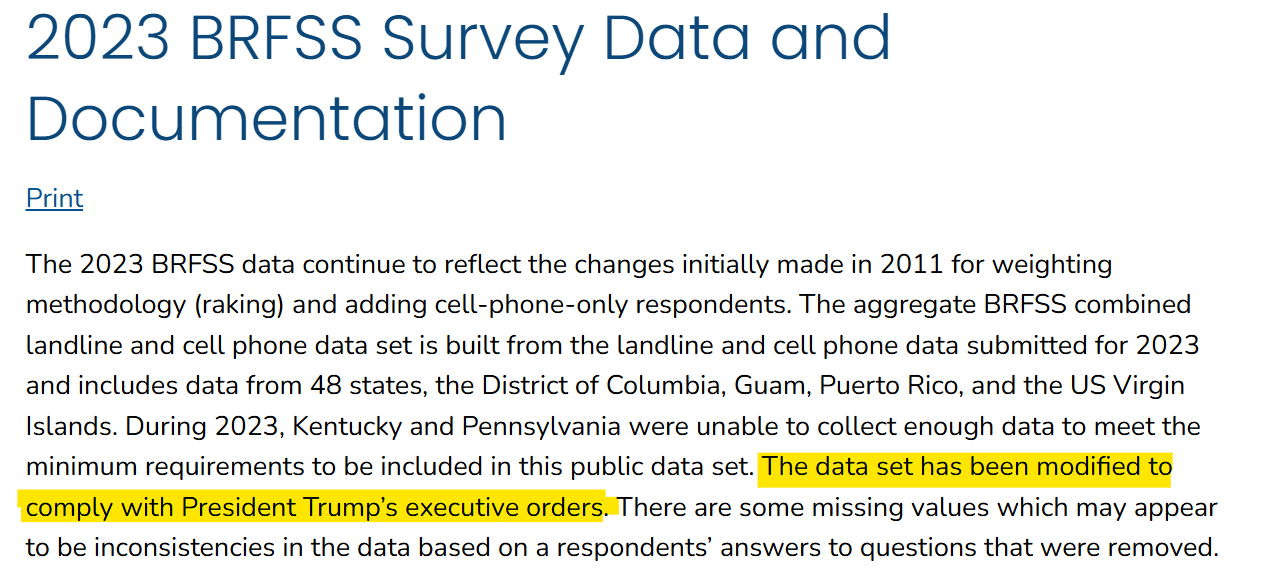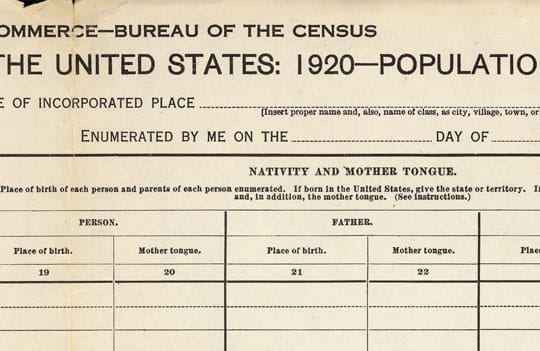Guest Post: The Forgotten Egg: The Importance of Public Federal Data in the United States
The Federal Statistical System impacts everyone in the US (and many globally) whether they realize it or not.

We are excited to share a guest post from some of our partners that continues our discussion about the importance of the Federal Statistical System.
Thanks to Claire McKay Bowen and Aaron R. Williams for their wise words about the forgotten egg!
Can you answer these questions?
- Can you name one of the 13 principal federal statistical agencies? (Bonus: name the largest or smallest.)
- Who is the current or a former Chief Statistician of the United States?
- Which agency sponsors the Survey of Earned Doctorates?
If you struggle to answer any of these, you are not alone. We posed these questions during a featured lecture at one of the largest gatherings of statisticians in the world and only a small fraction of the audience could answer them.
Why is that?
Amy O’Hara, PhD, research professor at Georgetown University and 2024–2025 President of the Association of Public Data Users, offered a perfect analogy:
“If you ask someone what you can make with eggs, they’ll probably say an omelet or an egg sandwich. Most people wouldn’t think of cake; unless they’ve made one before. That’s what federal data are like: the forgotten egg in the cake that everyone enjoys, without realizing where all the ingredients came from.”
In other words, federal statistical data are like eggs in baked goods; essential, yet invisible. Most people don’t realize that this system positively affects so many aspects of our lives, such as deciding where to build a fire station or hospital. Let’s revisit the questions we posed in the beginning to understand why they matter.
1. Can you name one of the 13 principal federal statistical agencies?
Thirteen principal statistical agencies make up the backbone of America’s data system. These agencies inform many aspects of daily life. For example:
- The National Center for Health Statistics conducts several health surveys to inform public health policy. For example, the National Health and Nutrition Examination Survey results led the federal government to eliminate lead from gasoline as well as food and soft drink cans in the 1970s.
- Sports Events and Tourism Association used Bureau of Transportation, Bureau of Economic Analysis, and Bureau of Labor Statistics data along with their data and other third-party sources to release their “State of the Industry" report that highlights that sports travelers spent $52.5 billion in 2023; $13.5 billion on transportation, $10.9 billion on lodging, and $9.7 billion on food and beverages.
- The National Agricultural Statistics Service, in partnership with NASA and George Mason University, launched a web-based tool that provides high-resolution soil moisture data. This information helps farmers estimate agricultural yield and productivity and assists researchers in identifying suitable areas for planting specific crops.
- The National Center for Education Statistics and Statistics of Income Division created the College Scorecard that allows families to compare higher education institutions across the nation based on field of study, graduation rates, earning potential, and more.
- The Bureau of Labor Statistics provides employment and inflation data that guides how the Federal Reserve targets interest rates, which directly affects credit card, auto loans, and mortgage rates.
- The Energy Information Administration reports the trends in domestic energy production and creates data products on national power infrastructure, weekly gasoline prices, residential energy consumption, and more.
- The Bureau of Economic Analysis and the National Center for Science and Engineering Statisticsdeveloped prototype data in 2021 to better understand the production and use of research and development, as well as other forms of intellectual property, within global value chains, which are the various activities that economic engage in to bring a product to market.
2. Who is the current or a former Chief Statistician of the United States?
This role sits within the Office of Management and Budget (or OMB) and leads the decentralized U.S. federal statistical system. The Chief Statistician coordinates across agencies through the Interagency Council on Statistical Policy, shaping how data are collected, stored, analyzed, disseminated, archived, and terminated. For example, Katherine K. Wallman served as the Chief Statistician of the United States from 1992 to 2017 and accomplished many things, such as enacting the Confidential Information Protection and Statistical Efficiency Act (or CIPSEA) of 2002. This act protects information collected exclusively for statistical purposes under a pledge of confidentiality and promotes statistical efficiency by enabling limited data sharing among three designated statistical agencies: the US Census Bureau, the Bureau of Economic Analysis, and the Bureau of Labor Statistics.
3. Which agency sponsors the Survey of Earned Doctorates?
Started in 1958, over 90% of doctoral recipients in the U.S. completes this survey. Yet, few of those respondents can name the agency behind it: the National Center for Science and Engineering Statistics, which is a part of the National Science Foundation. The Survey of Earned Doctorates tracks trends in doctoral education like if universities are generating enough accounting professors and the growing number of doctorates leaving academia. We have asked professors and other doctoral graduates across disciplines about this survey. Despite having filled out the survey themselves, few could name the sponsoring agency.
So, what’s the point of asking these questions?
We pose these questions in this blog to be the first in a series of posts and products designed to engage different audiences (such as K-12 teachers, researchers, journalists, community leaders, and more) in understanding and supporting the federal statistical system. Everyone who resides in the United States is part of this ecosystem, whether they realize it or not.
Through this series, we will explore how missing federal data affects communities and the nation, and how each group can help preserve and strengthen this vital infrastructure. This effort goes beyond simply calling for more funding or staffing. This series will include how each group in this broader ecosystem can promote the federal data infrastructure through teaching, citing, sharing, and advocating in ways that that align with each group's unique role and strengths.
We all have a role to play.
Because if we lose the eggs, there is no cake. 🎂




